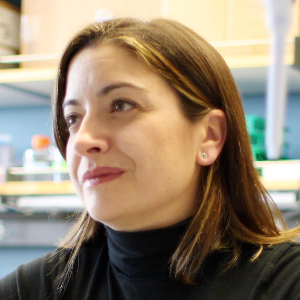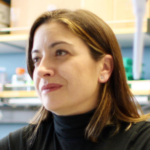
10 Dec Interview with Kara Davis of Stanford

Kara Davis, D.O. is an Assistant Professor of Pediatrics at Stanford University School of Medicine in the Division of Hematology and Oncology. Her research focuses on using high-dimensional single-cell analysis to organize tumor heterogeneity in pediatric cancers, especially blood cancers, as means to determine cell populations associated with clinical risks such as relapse in the context of standard and immunotherapy treatments. Clinically, Dr. Davis sees patients with leukemia and is involved with the Cancer Cellular Therapies program with experience in treating children with chimeric antigen receptor (CAR) T-cells and other immunotherapies including checkpoint inhibitors. Read her full bio.
Interview with Kara Davis of Stanford
Q: The Nobel Price in Medicine was awarded recently to James Allison and Tasuku for their work on unleashing the body’s immune system to attack cancer, a breakthrough that has led to an entirely new class of drugs and brought lasting remissions to many patients who had run out of options. The Nobel committee hailed their accomplishments as establishing “an entirely new principle for cancer therapy.” What is your first-hand experience the impact that those new drugs had on patients?
A: These immune checkpoint inhibitors have been an incredible demonstration of the ability of the immune system to control and in some cases, cure cancer, which has been the goal of researchers and physicians for decades. As a pediatric oncologist, we are learning that these drugs are safe for children but that this approach, on the whole, has limited efficacy. However, that there are small groups of patients that replicate the adult experience with ICI for anti-tumor effect. Continuing to study the role of these drugs for pediatric tumors as well as understanding the unique reasons that ICI work or do not work in childhood cancers continues to drive research in pediatric patients and inspires researchers and clinicians like me to learn more about the immune microenvironment of childhood cancers.
Q: What the next generation of immune therapies will look like for cancer?
A: For those tumors amenable to engineered T cell approaches to therapy, I believe that next generations of these treatments will rely upon combination targets. For any given tumor, combinations of antigens will be targeted to capture as much of the entire tumor population as possible to prevent antigen escape.
Q: The checkpoint inhibitors and CAR-T therapies now on the market have only been approved for some cancer types, and benefit only a small subset of those patients. What do you project the role of immunotherapy in cancer care will be ten years from now?
A: With further study, I believe we will have expanded the use of these immunotherapies to additional tumor types either through combination antigen targeting or through novel combinations of engineered T cells, checkpoint inhibitors and other small molecules to approach both the tumor and the immune microenvironment. In addition, we anticipate that for some cancers, as is happening now, the immune targeting therapies will come to be used earlier in treatment instead of only in relapsed or refractory cases.
Q: Approved immunotherapy drugs have severe side effects, turning the fury of the immune system against the patient own healthy cells, and they are expensive, costing more than $100,000 a year. Do you expect any of those to change in the near future?
A: Again, with experience, we are learning how to best manage the side effects and inflammatory response to immunotherapy agents, particularly CAR T cells to enhance safety without sacrificing efficacy. These improvements in safety will only continue with further experience and study to best understand risk factors and approaches to mitigate risk. Cost is a different animal entirely and will be up to our healthcare system including the pharmaceutical companies and payers to help bring down costs to make these therapies most accessible and of good value. We have studied the cost of CAR T cells, for example and if they are durable and keep patients in remission, saving patients from stem cell transplant, then they are of good value. However, if they must be consolidated for with transplant, they no longer represent a good value. Their worth will be determined by how well they work for patients and what other therapies they replace.






